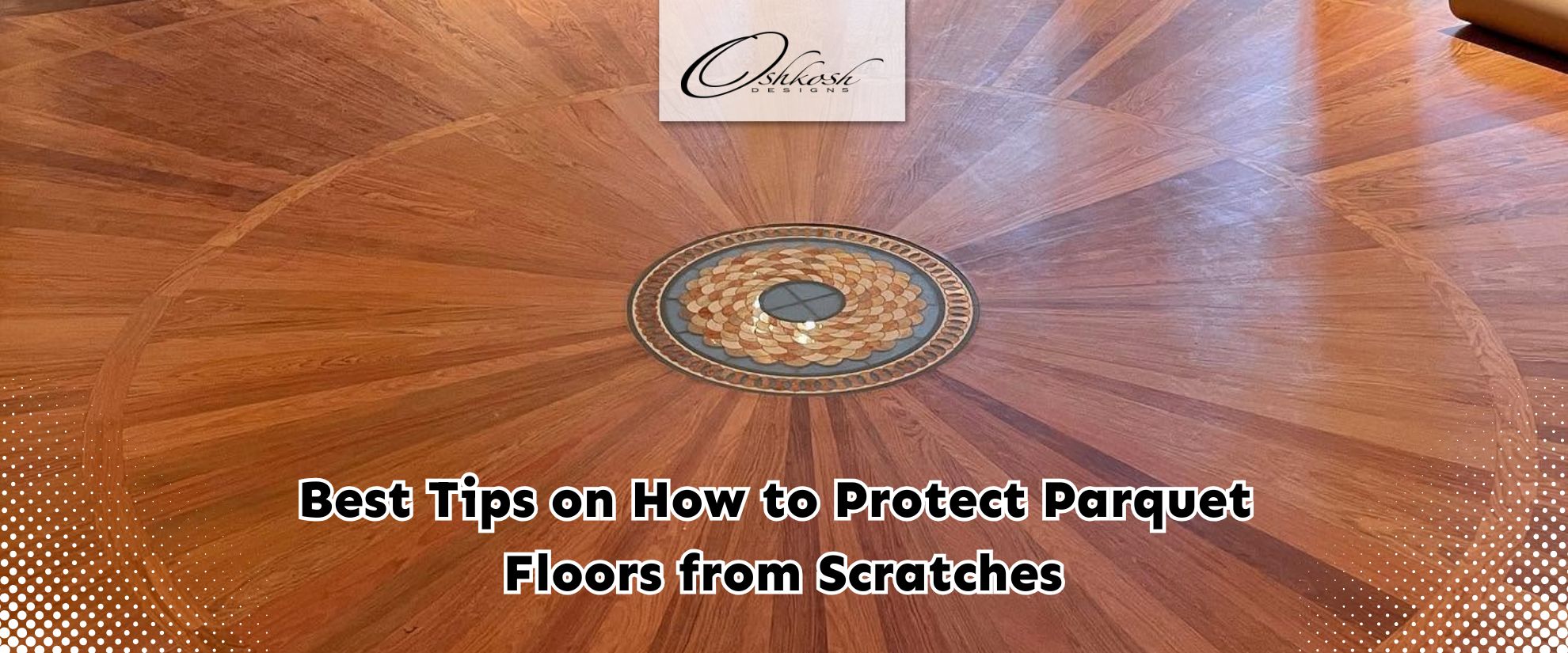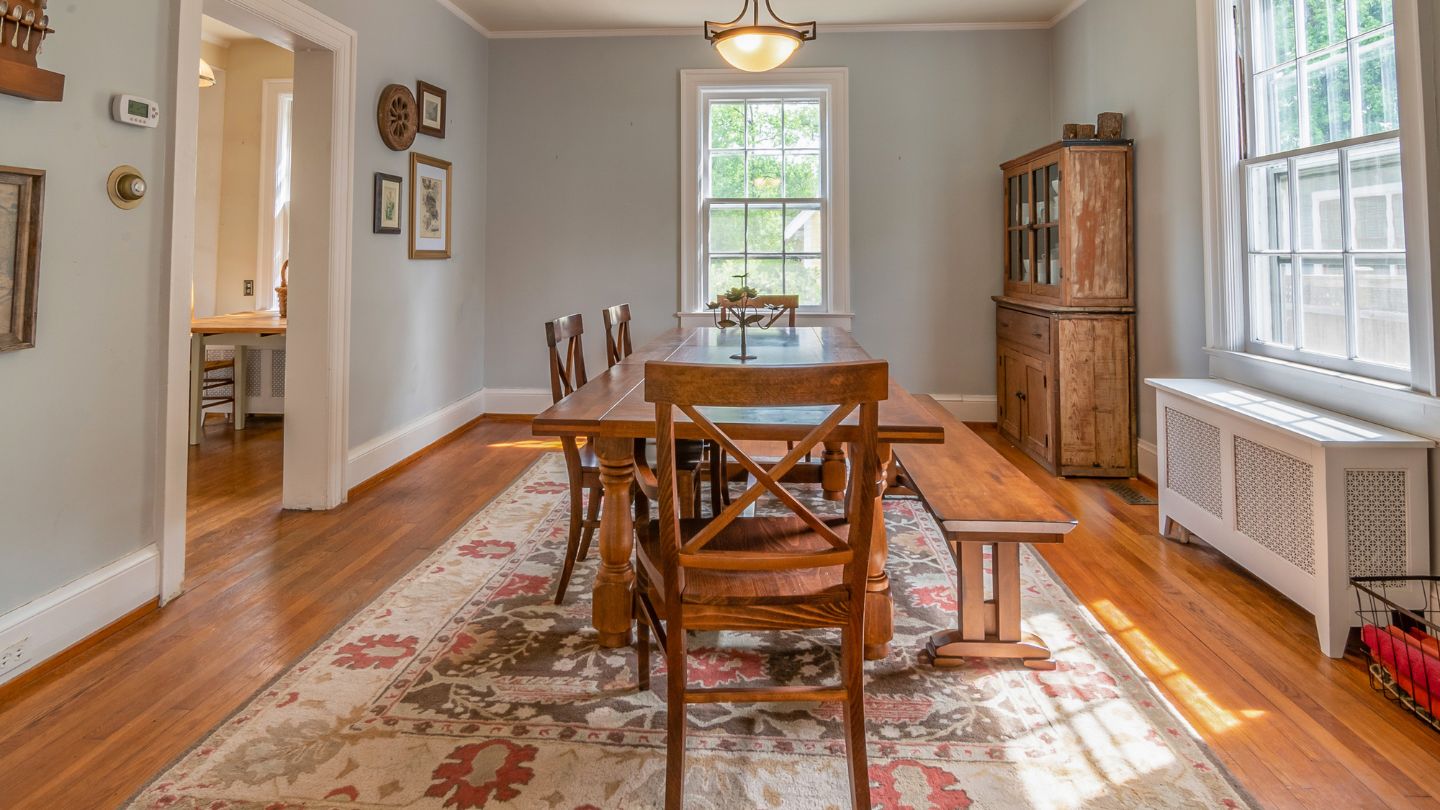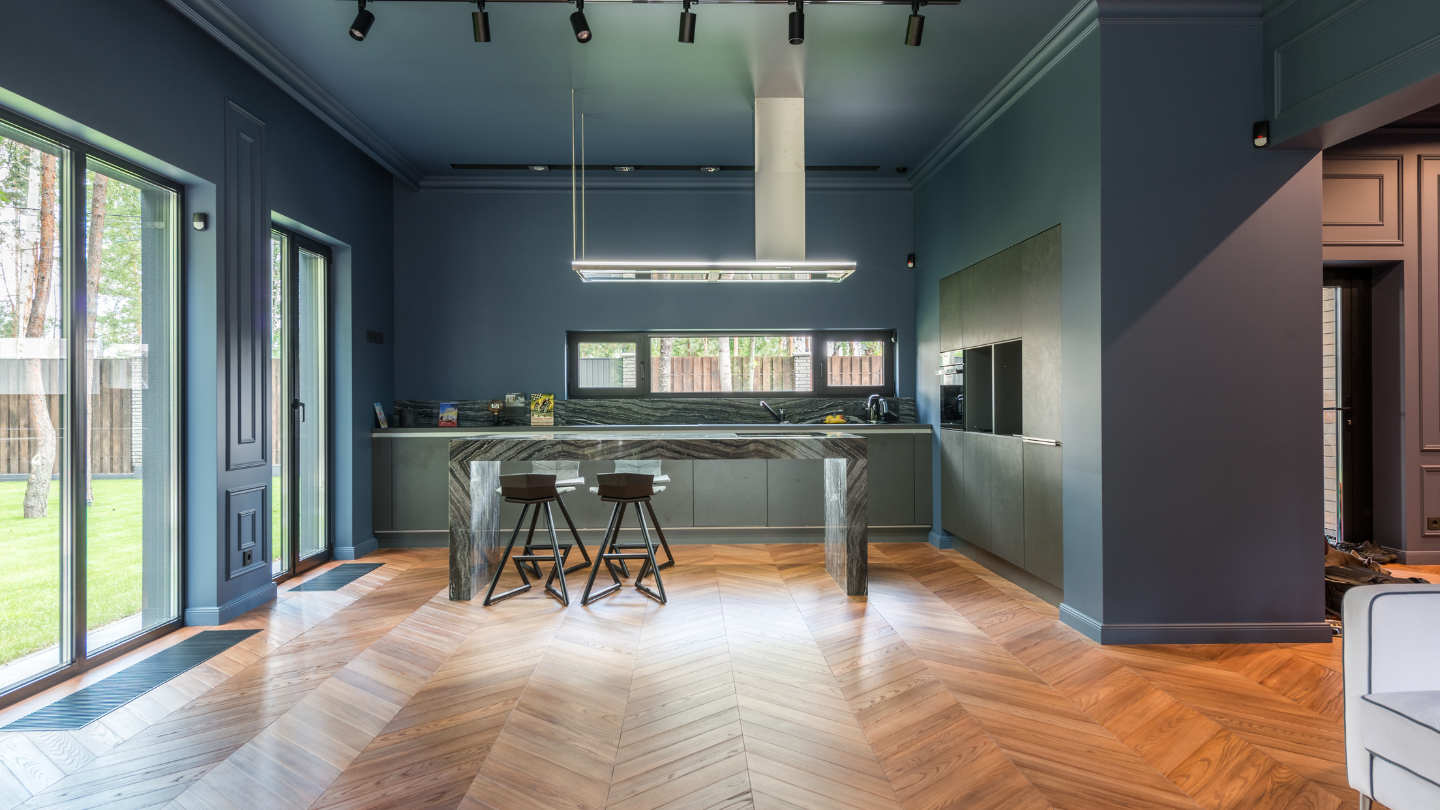Parquet floors add elegance and warmth to any space, but keeping them scratch-free can be a challenge. Whether it’s heavy furniture, pet claws, or everyday wear and tear, protecting your floors requires the right approach. In this post, we’ll share practical tips to prevent scratches and maintain the beauty of your parquet flooring. From cleaning techniques to furniture protection hacks, discover easy ways to keep your floors looking flawless for years to come.
Key Takeaways
- Regular cleaning of parquet floors is essential to prevent scratches caused by dirt and dust; using appropriate cleaning tools enhances their longevity.
- Protect furniture legs with felt pads and avoid dragging to minimize scratches on hardwood floors, ensuring long-term floor maintenance.
- Implementing a no-shoes policy, using area rugs in high traffic areas, and periodic furniture rearrangement are effective strategies to protect parquet floors from wear.
Regular Cleaning Routine
One of the most effective ways to prevent scratches on hardwood floors is to keep them clean. Regular cleaning is key to maintaining the pristine condition of your hardwood floor. Dirt and dust particles act like sandpaper, grinding into the finish and causing unsightly scratches. Regular sweeping or vacuuming helps keep these abrasive particles at bay, as scratches happen.
Choosing the right tools is crucial for this task. Brooms, mops, and vacuums are your best friends when it comes to keeping hardwood floors clean. Always vacuum before mopping to ensure that all dirt is removed and won’t scratch the floor during the cleaning process. A vacuum with a soft brush attachment is ideal for this purpose.
For mopping, less is more. Follow these tips to clean your wood floors effectively:
- Use a damp mop with a small amount of wood floor cleaner to avoid damage.
- Mop with the grain of the wood to help distribute the cleaning solution evenly.
- Consistent cleaning enhances the appearance of your floors.
- Regular maintenance extends the lifespan of your floors by preventing scratches and other damage. A microfiber cloth can also be useful for touch-ups.
A consistent cleaning routine is not just about aesthetics; it’s about essential maintenance. Incorporating these simple steps into your routine helps protect parquet floors from scratches and keeps them looking beautiful for years while ensuring a deep clean. After cleaning, remember to wipe the surfaces to maintain their shine and remove scratches.
Furniture Protection
Furniture can be one of the biggest culprits when it comes to scratches on hardwood floors. However, there are several effective methods to protect hardwood floors from furniture damage. One of the simplest methods is to use felt pads on the legs of all your furniture. These pads provide a soft barrier between the furniture and the floor, preventing scratches when the furniture is moved.
In addition to felt pads, other materials such as fabric pads, rubber caps, or even old socks can be used to protect your floors. Rubber pads are particularly effective in preventing both scratches and scuffs. However, regardless of the type of furniture pads you use, it’s crucial to avoid dragging furniture across the floor. Always lift furniture when moving it to prevent damage.
Furniture protection is not just about pads and caps. It’s about being mindful of the potential for further damage and taking steps to prevent it. Implementing these measures can significantly reduce the risk of scratches on your parquet floors, so you won’t have to worry about future issues.
Properly protecting your furniture can save you hassle and expense in the long run. It allows you to enjoy the beauty and durability of your parquet floors without constantly worrying about potential damage.
Use Area Rugs in High Traffic Areas
High traffic areas in your home can be particularly vulnerable to wear and tear. Using area rugs in these spots is an excellent way to protect your hardwood floors. Area rugs act as a shield, absorbing the impact of foot traffic and preventing dirt and debris from scratching the floor.
Consider the following tips for using area rugs on parquet floors:
- Place area rugs or throw rugs in high traffic areas such as hallways, foyers, and living rooms.
- Rugs protect your floors and add a touch of style to your space.
- Clean these rugs regularly to prevent dirt from accumulating underneath and causing damage.
- Avoid using rubber-backed mats, as they can trap moisture and may damage the parquet floors.
In addition to protecting your floors, area rugs can also be a design element that enhances the overall look of your home. Carefully selecting and placing rugs in high traffic areas maintains the beauty of your parquet floors while also adding protection.
Implement a No-Shoes Policy
One of the simplest yet most effective ways to protect parquet floors is to implement a no-shoes policy in your home. Shoes can carry dirt, grit, and other abrasive materials that can easily scratch hardwood floors. Encouraging family members and guests to remove their shoes upon entering significantly reduces the risk of scratches.
To make this policy more welcoming, consider providing a selection of comfortable slippers for guests to wear instead of shoes. This approach offers several benefits:
- Protects your floors
- Adds a cozy, inviting touch to your house
- Enhances the longevity and appearance of your parquet floors.
Offering slippers in addition to a no-shoes policy can greatly improve your home’s comfort and floor care.
Trim Pet Claws
Pets are beloved members of many households, but their claws can easily scratch hardwood floors, causing scratches. Regular trimming of your pet’s claws prevents scratches. Monitor your pet’s claws and trim them as needed to keep them maintained. This simple practice can go a long way in protecting your floors from damage.
If trimming is not an option, applying soft pads to your pet’s paws serves as an alternative. These pads provide a layer of protection between your pet’s claws and the floor, preventing scratches without the need for regular trimming. A seal can help ensure that the pads stay securely in place.
Maintaining your pet’s claws is not only about floor protection but also about their well-being. Regular claw maintenance can prevent injuries and ensure that your furry friends are comfortable and happy, all while keeping your floors scratch-free.
Rearrange Furniture Periodically
Rearranging your furniture periodically is a great way to prevent localized wear and tear on your parquet floors. Rearranging furniture helps distribute stress on the floor more evenly, reducing the risk of indentations.
Periodic moving furniture helps alleviate indentations and balance the wear pattern across the floor. This practice also has the added benefit of refreshing the look of your space, giving your room a new feel without the need to rid yourself of new furniture, while also preventing dents.
Establishing new traffic patterns by rearranging furniture can greatly extend the life of your parquet floors and repair overexposure in specific spots, promoting a more balanced wear pattern that enhances the overall appearance and longevity of your light floors.
Apply a Protective Finish
Applying a protective finish to your parquet floors is one of the most effective ways to enhance their durability and resistance to scratches. A protective finish acts as a barrier, shielding the surface from wear and tear while also adding a beautiful sheen to the wood. Refinishing your parquet floors can restore their appearance and provide an additional layer of protection.
A flooring professional can recommend the best protective finishes for your parquet floors. They can recommend the most suitable products and techniques to ensure your floors are well-protected and maintain their beauty for years to come.
Refinishing Parquet Floors
Refinishing parquet floors is a process that can breathe new life into old, worn-out wooden surfaces. It involves sanding the floor to remove the old finish and any scratches, creating a smooth, fresh surface. For parquet floors, using an orbital sander is often recommended due to the varied grain direction.
Before refinishing, it’s important to fill any gaps with wood filler to create an even surface. After sanding, the floor should be thoroughly cleaned to remove all dust and debris before applying a new finish. This step is crucial to ensure a smooth, flawless finish.
There are various types of finishes available, each with its own benefits. Some finishes, like Rubio Monocoat, provide both stains and sealing in a single application, making the process more efficient. Refinish your parquet floors to restore their beauty and protect them from future damage with a protective coating. To get the best results, it is also necessary to know parquet flooring in detail through your contractor.
The Finishing Statement
Protecting your parquet floors from scratches involves a combination of regular maintenance, protective measures, and mindful practices. From maintaining a regular cleaning routine and using furniture pads to implementing a no-shoes policy and trimming pet claws, each step plays a vital role in preserving the beauty and integrity of your floors.
By following these tips, you can ensure that your parquet floors remain stunning and scratch-free for years to come. Remember, with effort from Oshkosh Designs, your parquet flooring can maintain its elegance and investment value. Enjoy the lasting beauty and durability that well-cared-for parquet floors can bring to your home.
Frequently Asked Questions
How often should I vacuum my parquet floors to prevent scratches?
To prevent scratches on your parquet floors, you should vacuum at least once a week to effectively remove dirt and dust. Regular cleaning helps maintain their appearance and longevity.
What type of protective finish is recommended for parquet floors?
A polyurethane finish is highly recommended for parquet floors, as it provides excellent durability and protection. Alternatively, Rubio Monocoat is also a great option if you prefer a more natural finish.
Can I use any type of area rug on my parquet floors?
You should avoid rubber-backed mats on parquet floors, as they can cause damage. Instead, choose area rugs with soft backing and maintain them regularly for the best results.
How often should I trim my pet’s claws to protect my parquet floors?
To protect your parquet floors, trim your pet’s claws every 1-2 months, monitoring their length to prevent scratches effectively.
What are the benefits of rearranging furniture periodically?
Rearranging furniture periodically enhances the longevity of your floors by distributing stress and preventing localized wear and tear. This simple practice can contribute to a more vibrant and well-maintained living space.



